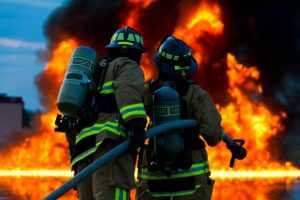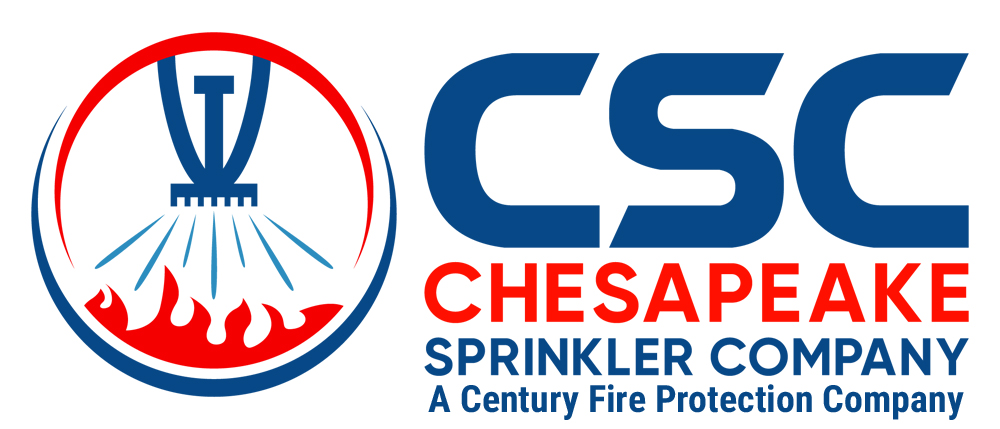Occupancy can be a complex term for building owners regarding fire safety because occupancy has various functions. First, there are classifications for fire sprinkler systems design, installation, and water supply requirements. The NFPA13 Standard for the Installation of Sprinkler Systems outlines these.

Fire safety should be a constant priority.
Then, occupancy loads are calculated by the NFPA1 and NFPA 101 Life Safety Codes. Both requirements protect people if a fire happens. However, these requirements have two distinct ways of looking at “occupancy.” The classifications in the NFPA13 ensure that fire sprinkler systems are appropriate for the potential hazards they contain. Therefore, the NFPA13 defines them in terms of hazard classifications.
On the other hand, NFPA 1 classifies occupancy based on the building’s intended use rather than the hazards it might contain. The NFPA 1 has 31 unique occupancy types defined with specific requirements and occupant load factors, all outlined in NFPA 101 Table 7.3.1.2. Here are other things to note about how occupancy loads relate to fire safety.
Occupancy Load and Egress
Once a building has its appropriate fire sprinkler system for its intended occupancy, building owners rarely have to consider occupancy regarding day-to-day operations. All building owners must do is conduct the required inspections and maintenance for their sprinkler systems.
On the other hand, building owners must comply with the occupancy load requirements determined by NFPA1 and NFPA 101. In this case, occupancy is all about egress. “Egress” refers to getting people out of a building safely in an emergency.
Occupancy Load and Maximum Occupancy Calculation
The occupancy load is the total number of people allowed in a room or space and is calculated by the intended use of that space. Some rooms or areas in a building have many benefits, resulting in various occupant loads. When a room has multiple uses, the lowest calculated occupancy takes priority.
For example, if a room has tables and chairs, more space is necessary to allow room for egress around the tables. However, the same room with chairs in rows would provide sufficient egress between the rows. Therefore, this reduces the number of people that can exit the room safely in an emergency.
The NFPA’s factsheet for calculating occupant loads is helpful. However, the Authority Having Jurisdiction (AHJ) has the occupant loads you must follow. The basic calculation is as follows: The occupancy load = open floor space of the room (ft2) ÷ occupant load factor (ft2/person) Where to find the occupancy load: The occupant load factor is based on occupancy type per NFPA 101, Table 7.3.1.2.
Signage
Exits should never have obstructions, and occupants should always be able to locate the exits in your building. Providing a safe escape means having the proper signage at every egress point. It’s critical for getting every person out safely during a fire emergency. Otherwise, the confusion could lead to lost lives.
The NFPA 101 provides requirements for egress signs and indicates the maximum occupant load:
- Exit signs must identify exits and guide the paths to get to those exits. These include the location of these signs and how to illuminate them.
- Occupancy signs should be in the proper area, typically in a prominent place near the main exit, and shouldn’t be damaged or ineligible. Business owners must have signs showing the maximum occupancy posted in every room. In rooms with multiple purposes with many maximum occupancies, signs must display both limits.
What Happens When You Don’t Comply
During a fire inspection, a fire marshal will always check to ensure that the number of people in different areas does not exceed the occupancy load based on its arrangement and maximum occupancy for that space. You could receive a citation if the room does not comply with occupancy load codes.
You should also consider that if you remodel your building, it changes the number of exits and the space’s size. You should also consider this if the purpose of the room changes. Per the AHJ, you must recalculate your occupancy and maximum occupancy loads if these changes occur. Are you unsure if you have the proper fire sprinkler systems based on the size of your building and its occupants? Has it been a long time since you’ve had inspections or maintenance for your fire protection systems? Contact Chesapeake Sprinkler today.
Contact Chesapeake Sprinkler Company Today!
Chesapeake Sprinkler Company is a leading fire sprinkler contractor in the region, which is now a 100% employee-owned (ESOP) company. As a full-service fire protection company, we offer design, fabrication, installation, testing, maintenance, and inspection of fire protection systems—everything you need from your fire suppression specialist.
For more information, please email or call our Odenton location at 410-674-7041, our Ashburn location at 703-729-5150, or for service/maintenance Chesapeake Protection Services at 410-674-7577. Feel free to keep in touch through Facebook, Twitter, or LinkedIn!
